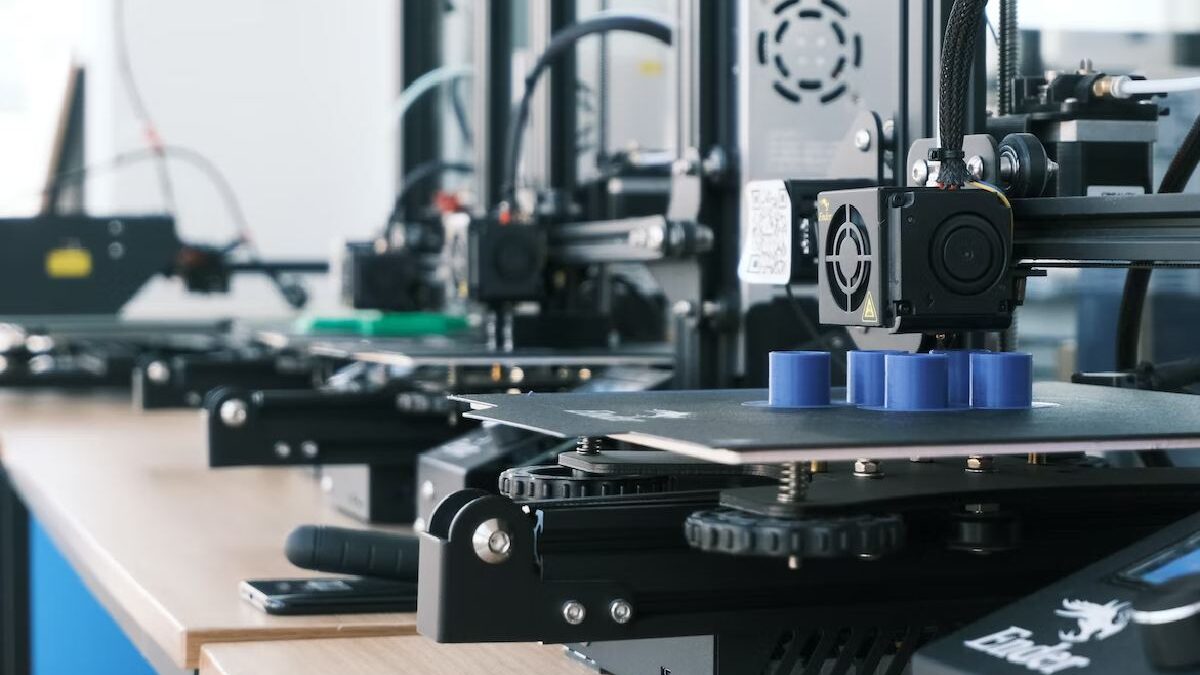11 technologies that make smart manufacturing possible five years ago, MHI CEO George Prest and his team set out on a road trip across the United States to ask materials handling stakeholders a simple question: Where do you see the industry in 2025?
The response he got was that the business community was moving fast toward change. Everyone involved in the supply chain had started speaking a different language, bringing 3D printing, drones and autonomous vehicles as the future.
Since that trip, MHI has surveyed more than 1,000 executives each year to gauge the industry’s path toward technology adoption. Below is an overview of the 11 technologies they identify as set to shape smart manufacturing:
1. Cloud Computing and Storage
Big Idea – Cloud computing and storage will help companies outsource the costs of managing the data collected and memory needed for emerging technology.
Application – The benefits are not limited to manufacturers. MHI has stopped using internal servers for its data: “It’s much cheaper,” Post said.
Guidance – Migration systems to a new operating procedure and budget while ensuring appropriate measures are taken to maintain cybersecurity.
2. Network Inventory and Optimization
General Idea– A platform to connect and optimize how companies use all the data emerging technology collects.
Application – Inventory control drones rely heavily on these systems, sending and receiving data from them to help executives manage real-time product data.
Guidance – An effective system must interact closely with emerging technologies. It receives data from sensors, talks to autonomous vehicles, and uses algorithms to classify and optimize that information.
3. Sensors and automatic identification
General Idea– Sensors such as RFID tags can remove manual steps from the quality assurance process at each supply chain step and add visibility at the SKU level.
Enforcement – Macy’s deployed RFID tags to all of its inventory last year and saw a 30% reduction in stock-outs.
Guidance – Having the infrastructure – such as systems with high processing speeds and memory capacity – to store the enormous amount of data provided by the new sensors.
4. Predictive Analytics
General Idea– Use the massive amounts of data obtained from new technology to anticipate problems and improve forecasts.
Application– Imagine putting a crystal ball into your supply chain and asking what would happen if an order was late. Predictive analytics will let you know what shortages will occur at a future date and how customers will be affected.
Guidance – How can supply chains move from predictive analytics to prescriptive analytics? Prescriptive analytics allows the software to analyze problems and suggest the next steps for the supply chain manager.
5. Internet of things
General Idea – A broader category for sensor-enabled equipment and systems in constant communication.
Application – The intelligent factory is based on this technology, in which sensors on production lines, pallets and forklifts can be adapted to deliver the data to a central system.
Guidance – How to get all existing teams and systems to interact? “Every piece of equipment that exists was developed with a different code,” Prest said.
6. Robotics and Automation
General Idea – Turn ordinary equipment into self-functioning machines.
App– At MODEX 2018, Brain Corp highlighted a robotics-enabled debugger. The company partners its software with manufacturers’ equipment to increase efficiency.
Guidance – Which machines are suitable for automation? What talent is required to design and operate these systems?
7. Wearables and Mobile Tech Big
Idea – Robust technology like smart industrial glasses, gloves, or other clothing items can help increase worker productivity during labour shortages.
App– Logistics providers can use this to reduce the need for temporary labour training during peak retail fulfilment season. “This makes new hires efficient the first day they’re on the job,” Prest said.
Guidance – Not all emerging technology can work well in crowded or noisy facilities. Workers must also be willing to adapt to changes in tools and processes.
8. Blockchain
General Idea – Manufacturers with a decentralized ledger can use it to record operations and ensure their integrity.
App – “It is in its infancy; everyone is still trying to figure out what the blockchain is about.” Prest said.
Guidance – Adoption will require companies and networks to jump to the “front end” of the technology – where pilots could fail – to demonstrate the benefits of the technology.
9. Autonomous Vehicles and Drones Big
Idea – Increase productivity by reducing the resources needed for routine tasks, like moving a vehicle through a facility or raising a forklift to count first-tier inventory.
App–Locus Robotics has a self-guided vehicle that drives through a designated space within the warehouse for workers to place items in their bins.
Guidance – Facilities that purchase these tools often required to redesign or map their systems to safely integrate autonomous vehicles without disrupting work operations.
10. 3D Printing
General Idea – Reduce the steps and materials needed to produce small parts, using a new manufacturing method to build a product in one step.
App– GE used the technology to design an engine with only 12 components, 5% lighter and a third more printed. The previous version had 855 members.
Guidance – Invest in research to integrate it into current production processes and find the talent to carry it out.
11. Artificial Intelligence
General Idea – Allows the potential of workers to be unleashed by using advanced computing to perform routine or human-like tasks.
Application – Speech recognition within warehouse wearables allows operators to carry out their work and connect with a warehouse management system.
Guidance – The United States will have to overcome regulatory hurdles and fear of change to realize this technology’s full potential.

